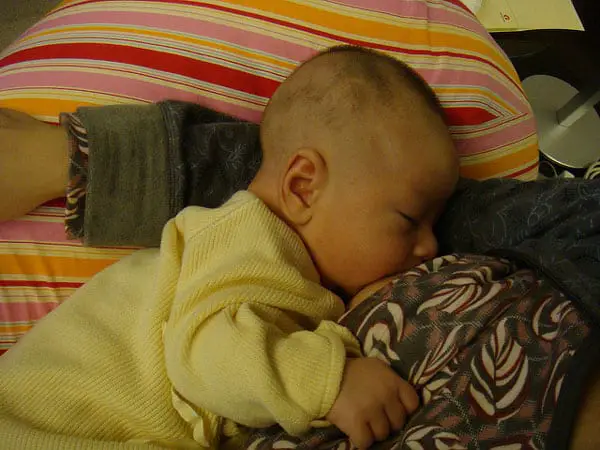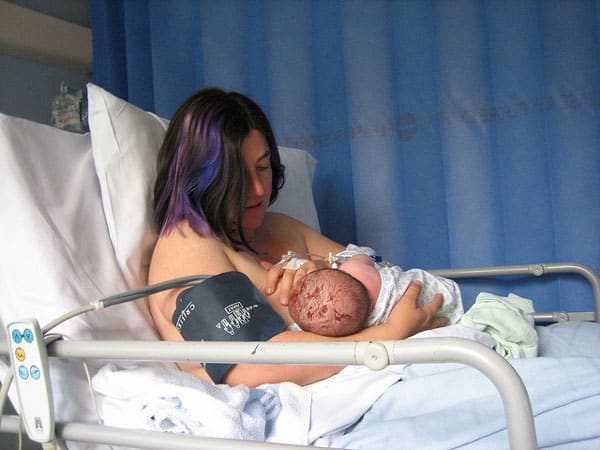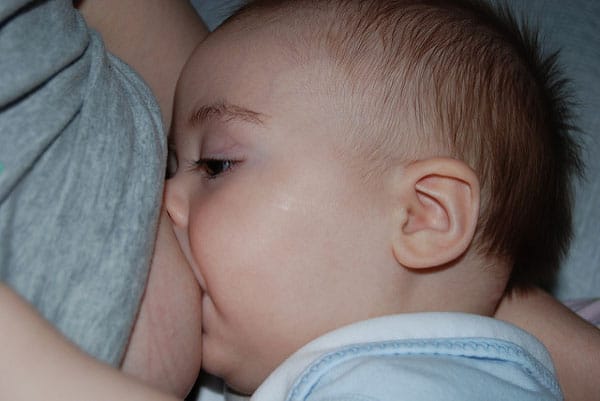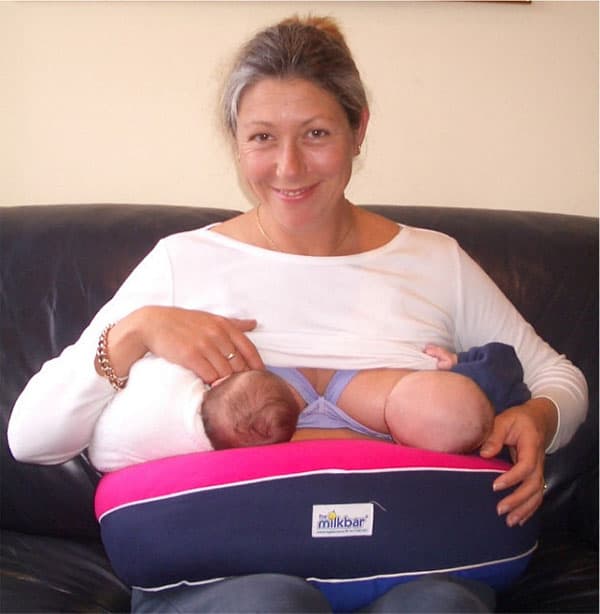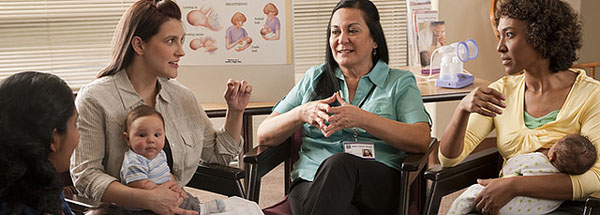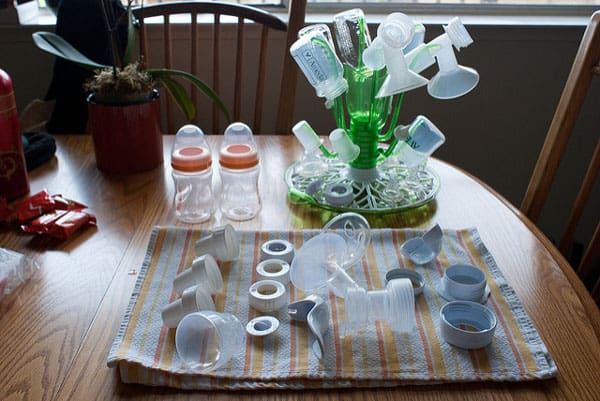Women have been breastfeeding since the dawn of humanity – so it is should be “easy” and “natural” for us to do, right? This myth causes many new moms a lot of frustration when breastfeeding doesn’t go as easy as they expected. Don’t worry though. These 26 breastfeeding tips and hacks can help make nursing easier.
Newborn Breastfeeding Tips
1. Utilize the Hospital’s Lactation Specialist
If you are giving birth in a hospital, make sure they know that you want a visit from the lactation specialist.
Also known as a breastfeeding consultant, these specialists are certified to help nursing moms through the challenges of breastfeeding. They will check to make sure latch is correct, ask you about your infant’s stools, and answer any questions you have.
Don’t have access to a lactation specialist in the hospital? You can use this directory to find one.
2. Breastfeed within One Hour
Various health organizations recommend that you breastfeed within the first hour after giving birth. It helps develop immunity, keeps the baby calmer, and teaches the baby good feeding habits.
Early breastfeeding also has benefits for the mother, like reducing post-birth blood loss and improving milk flow.
3. Breastfeed Often
Newborns usually need to feed at least 10 to 12 times per day. If your breastfeeding frequency is less than this, you will have a hard time maintaining milk supply.
It is important to understand that milk production is driven by supply. When your breasts become engorged with milk (such as if you are using formula for some feedings), it signals your body to produce less milk, which can lead to problems later on.
4. Know the Breastfeeding Positions
There are numerous positions that you can use for breastfeeding. Each has its own benefits, and you might have better luck with one position than another.
The main breastfeeding positions are:
- Cradle hold
- Crossover hold
- Football hold
- Side-lying position
- Laid-back position
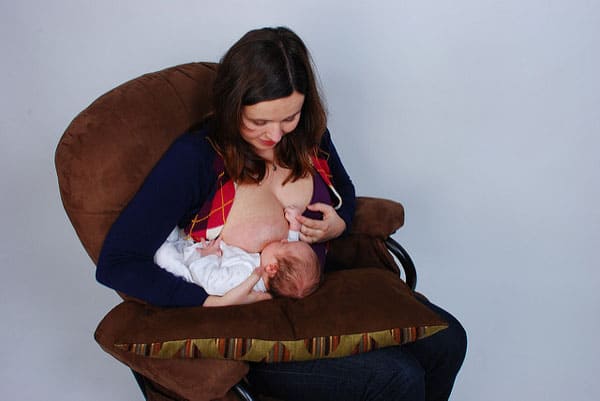
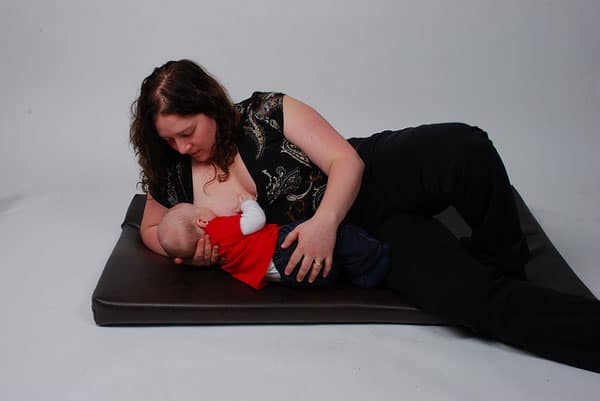
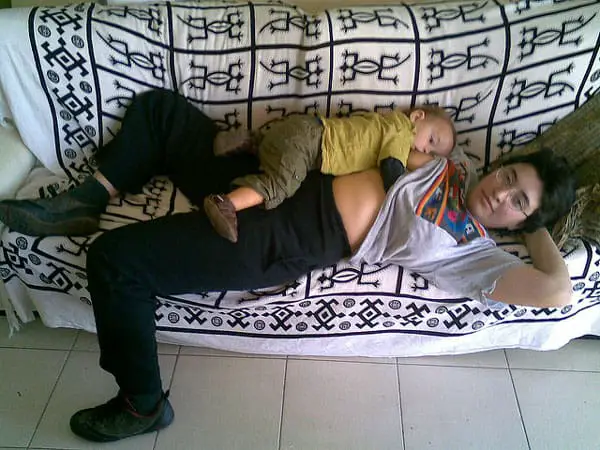
5. Be Wary Of Falling Asleep Breastfeeding
Breastfeeding releases the hormone oxytocin, which has a calming effect. For sleep deprived mothers, trying not to fall asleep breastfeeding can be a tall order! It often happens fairly naturally, especially if you are already lying down.
The AAP recommends that mothers do not fall asleep while nursing to avoid rollover or suffocation risk.
The most common risk is bringing your baby to bed in the middle of the night and falling asleep nursing. Especially with newborns, make sure you are careful about setting up a safe environment for any type of bedsharing.
6. Learn What Proper Latch Looks Like
Many breastfeeding problems occur because of improper latch. Here’s how to tell if your baby has proper latch:
- The baby’s mouth is covering most of the areola, not just the nipple
- You can see the pink of the baby’s lips
- The tongue is positioned between the gums and your breast
- No milk is leaking
- You can see the baby’s mouth sucking
- You hear swallowing sounds, not a clicking sound
7. Watch Videos Before The Baby Comes
It’s difficult to understand the mechanics of breastfeeding until you have visuals. Youtube has a trove of videos of course, but for breastfeeding there are also tutorials online.
8. Alternate Breastfeeding Positions
Different breastfeeding positions put pressure on different parts of your nipple. If you stick to one position, you could end up activating certain mammary glands and not others. Switching position is a good way to prevent clogged milk ducts and sore nipples.
9. There’s Usually No Need to Avoid Certain Foods
One of the most common breastfeeding nutrition myths is that you need to avoid certain foods. This is one I personally heard from my mother-in-law as she reprimanded me for eating garlic. Apparently, the garlic would “make my milk taste like garlic and turn off the baby.”
True – the foods you eat do influence how your breastmilk tastes. However, various studies (such as this one) found that “varied diet in breast-feeding mothers produces more flavor exposure and experiences in children, which may help explain why breastfed infants are less picky and more willing to try new foods.”
So, unless your infant is showing signs of a food allergy (which is rare for an infant to get through breastmilk), then eat whatever you want. It might even help you avoid having a picky eater later on!
10. Know When to Burp Your Baby
Infants have tiny stomachs. If they swallow too much milk or air during feeding, gas bubbles can form in their bellies. It is uncomfortable for them and they will let you know by being colicky!
You don’t always have to burp a baby. However, if your baby is fussing, has cried a lot before feeding, or you have a fast milk supply, you’ll need to burp your baby.
11. Use Breastfeeding Aids to Take the Strain Off Your Back
After carrying an 8-pound baby plus a few pounds of placenta and amniotic fluid, your posture is probably less than ideal. You don’t want to make it (and your back pain) worse by slouching over while breastfeeding.
Breastfeeding aids like pillows and stools can be really helpful for this. You’ll be spending hours everyday breastfeeding over the next few months, so consider it a necessity and not a luxury.
12. Keep Track of Dirty Diapers
One of the biggest concerns for breastfeeding moms is whether their baby is getting enough milk – especially if weight gain is slow.
Rather than stressing about weight gain, keep track of how many dirty diapers the baby is having. So long as there are plenty of dirty diapers, your baby seems happy, and steady (even if slow) weight gain is happening, you likely have nothing to worry about.
Tips for Solving Breastfeeding Problems
13. Breast Soreness is Okay – Pain Is Not!
When you’ve got an infant suckling your nipples for hours on end, it is normal to feel a bit of soreness. However, feeling pain while breastfeeding is not normal.
The most common causes of breastfeeding pain are:
- Incorrect position
- Improper latch
- Engorgement
- Thrush
- Tongue tie
14. It’s Never Too Late for Professional Help
Motherhood is a stressful, confusing time. If you have any concern about whether you are breastfeeding properly or not, seek professional help.
While forums and advice from other moms can be useful, it isn’t a substitute for professionals. A lot of times, well-meaning individuals will give you bad advice so it is better to stick to the pros.
15. Don’t be Hard On Yourself if Breastfeeding Doesn’t Go Smoothly
Your ability to breastfeed is not a reflection of you as a mother. Do the best you can, seek professional help, and see if any underlying conditions are causing the breastfeeding difficulties.
If problems persist, you just might find it is better for you and the baby if you switch to formula. Whatever you do, just don’t let others bottle shame you for your decision!
16. Moisturize Your Nipples
It is important that you take care of your nipples while breastfeeding. Otherwise, they can get painfully dry, crack, and become infected.
Some safe nipple moisturizes include:
- Your own breast milk – just rub a few drops of it around your areolas after feeding
- Lanolin
- Coconut oil
- Olive oil
- Cocoa butter
17. Increase Milk Supply Naturally
The best way to increase your breast milk supply is to nurse, pump more frequently, and drink water. However, there are certain natural herbs which act as galactagogues, meaning they boost milk supply.
Some galactagogues recommended by the American Pregnancy Association include:
- Fenugreek
- Blessed thistle
- Alfalfa
- Goat’s rue
Breastfeeding Tips for Everyday Life
18. Don’t Give Your Newborn Water
No, your baby will not dehydrate without water. Your breast milk contains everything your baby needs to stay hydrated.
In fact, giving a baby water could cause:
- Water intoxication
- Seizures
- Coma
- Malnutrition
If you are giving your baby water, then you also aren’t breastfeeding – which in turn could affect your milk supply. So don’t do it before 6 months!
19. Avoid Using Pacifiers for At Least 3-4 Weeks
When you’ve tried everything – feeding, changing diapers, napping… – and your baby is still fussy, a pacifier can be a lifesaver.
Just wait until your baby is at least a few weeks old until you give her one though. Some experts recommend waiting longer.
Because the sucking movement for a pacifier and breastfeeding are different, introducing a pacifier too early can cause nipple confusion.
20. Get Comfortable with Breastfeeding in Public
Yes, breastfeeding in public is a controversial topic. However, if you want to maintain any sense of a social life, you will want to get used to it.
Given the choice between breastfeeding in a dirty bathroom stall and breastfeeding at a café while chatting with friends over coffee, I’d take the café!
If you are self-conscious, you can always throw a receiving blanket over you.
21. Modify Regular Tops For Breastfeeding
Nursing tops are great to have, but they can really put a strain on your budget. Instead, just stick to button-down or V-neck tops. It is easy to take your breasts out of these. Unlike with tees, there won’t be any need to pull your entire shirt up to expose the nipple.
Feeling crafty? You can also make your own DIY breastfeeding top.
22. Invest In a Good Breast Pump
Even if you don’t plan on going back to work until after your child is weaned, you’ll still need a breast pump at some point (like when you want to pump milk ahead of time so you can freely enjoy cocktail night with your girlfriends!).
Breast pumps can be pricy, but they are worth it for the freedom that pumped milk offers you. You might even be able to get a free breast pump through insurance.
23. Don’t Buy Too Many Bras At Once
You’ll probably want to get a few nursing bras to make your life easier. However, don’t stock up on lots of new bras all at once.
It is normal for your breasts to change sizes during the course of breastfeeding. If you get a bunch of bras right after birth, you might find that they don’t fit a month or two later. Nursing bras made of stretchy material are good choice because they adjust to your breast size better.
24. Get Dad to Help Out
Dad might not be able to breastfeed the baby, but he can help out in many other ways. Get him to bring the baby to you at night so you don’t have to get up (again!) for the feeding. And make sure that he is taking on his fair share of the housework.
We all know that moms are amazing, but there’s no reason you should become a super multitasker like the mom in the picture above!
25. Be Strategic About Drinking
After 9 months of not drinking, you might be eager for cocktail night. Despite likely needing that drink, you might hesitate naturally.
The science shows that alcohol does get into the mother’s breast milk, which in turn can be transferred to the breastfeeding infant. However, the amount of alcohol that actually gets to the infant is minimal. An occasional drink isn’t likely to harm your baby.
Still, we all want to minimize any harm to our infants. So, if you decide to drink alcohol while breastfeeding, follow these recommendations:
- Breastfeed immediately before consuming a drink. By the next feeding, the alcohol levels in your milk will be much lower.
- Feed your infant pre-pumped milk or formula after you’ve consumed alcohol.
- Never co-sleep with your infant if you’ve had anything to drink.
26. Bond with Older Children
We hear a lot about how breastfeeding creates a bond with your infant. But what about older children? Breastfeeding takes up a lot of your time (especially in the beginning). You don’t want your older children to feel left out or jealous of breastfeeding time.
The solution is to utilize breastfeeding time to bond with the older children too. Nerdy Mamma talks about how she bonded with her toddler while breastfeeding the new baby. For example, she:
- Reads a book with the older child
- Let’s the child sit on her lap
- Doesn’t say “no” while breastfeeding
- Has group cuddle time
If you are worried about how you will keep an active toddler busy while breastfeeding, Pickanytwo has some ideas like singing songs and playing I Spy.
27. Work with a lactation consultant
The Lactation Network will check your insurance for you and Pear you with lactation consultant according to your needs. You can even choose whether you need consultant in an emergency situation or if it’s a non-urgent case. Usually insurance will fully cover visits from a lactation consultant at least a few times, I’ve heard of Blue shield of California covering six visits. You and if you think everything is going well, it’s worth checking to see if there’s any issues that you may not have thought of like hyperlactation or oversupply.
28. Enjoy It!
They all say it, but it is true: this time goes by fast! Through the exhaustion, do your best to enjoy the bond that breastfeeding creates.
Image credits:
“Breastfeeding” (CC BY-SA 2.0) by myllissa
“DSC_8125 Photo by Al van Akker” (CC BY 2.0) by Mothering Touch
“Feeding going well” (CC BY-SA 2.0) by Rachel M Coleman
“Camilo and gaba nursing on the couch” (CC BY-SA 2.0) by rabble
“twinfeedingshot” (CC BY 2.0) by Mothering Touch
“Nursing and napping” (CC BY 2.0) by Daddy-David
“”Nuff Said!” (CC BY-NC 2.0) by CeeKay’s Pix
“breast pump overload” (CC BY-NC 2.0) by madichan
“1171255443” (CC BY-NC 2.0) by jeff.snodgrass
“Grace breastfeeding Scott” (CC BY-ND 2.0) by Marc van der Chijs
“comunhão” (CC BY-NC-ND 2.0) by Flávio Correia Lima
“March 20 – WIC – WIC blog photo” (CC BY 2.0) by USDAgov
“Multi-Tasking” (CC BY-NC 2.0) by texasgurl
“DSC_7297 Photo by Al van Akker” (CC BY 2.0) by Mothering Touch
“DSC_7172 Photo by Al van Akker” (CC BY 2.0) by Mothering Touch
“Piknikas” (CC BY-SA 2.0) by c r z

